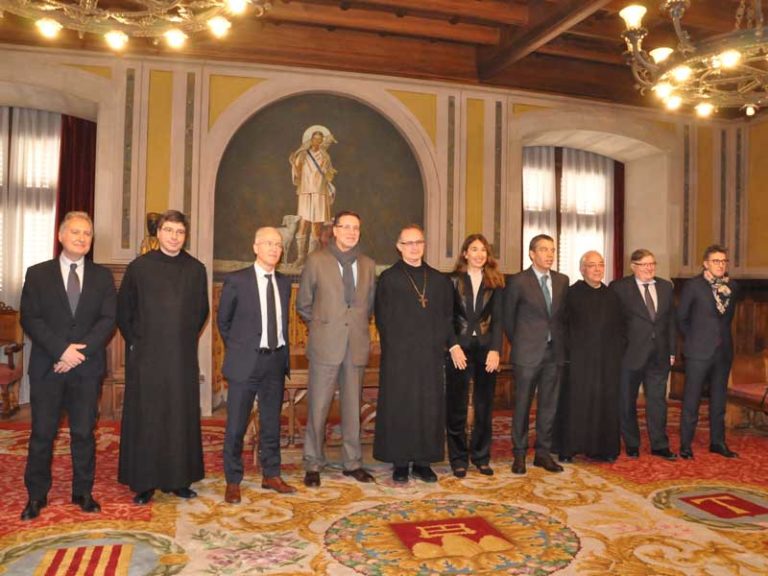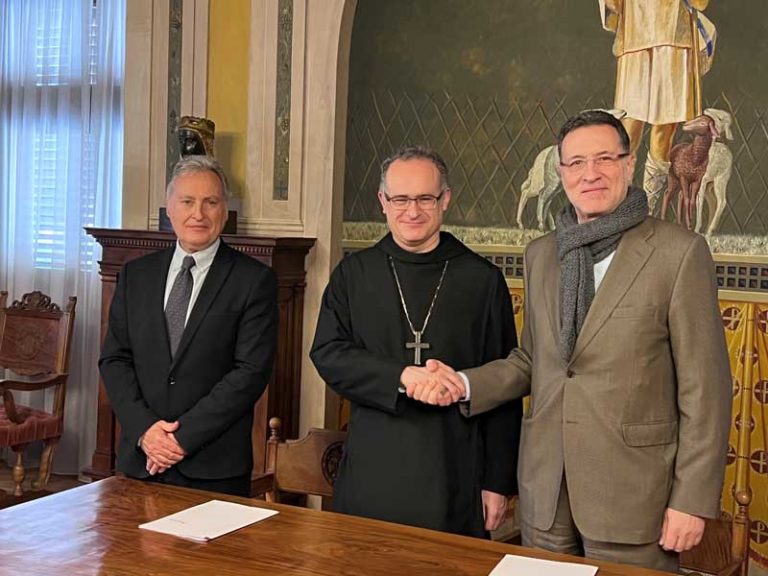Connectivity is our main area of action. We create and implement programs that differentiate us, and benefit society and territories in situations of vulnerability.
Our own programs focus on improving connectivity in rural areas where major social, territorial and digital transformations are needed. The aim is to bring technology closer to the rural environment and overcome challenges arising from existing gaps in order to improve people´s quality of life.


People with difficulties in accessing connectivity

Underpopulated areas with an increasing aged population and scarce economic activity

Social gap
Connectivity Master Plan
Initiative with the aim of reactivating industrial colonies by boosting the economic activity and promoting innovation in untapped industrial sectors.
El Plan Director propone 6 programas de dinamización:
En colaboración con el Ayuntamiento de Puig-reig, la Cámara de Comerç del Berguedà, Fundesplai y Cruz Roja, organizamos cada año un campamento tecnológico de verano en Puig-reig como iniciativa para la reactivación de las colonias industriales que se encuentran abandonadas en la comarca del Berguedà.
Este proyecto aprovecha algunos de los edificios vacíos de la colonia Cal Pons, dotándolos de cobertura y conectividad, habilitando así espacios de uso social y educativo para los jóvenes durante el verano.
Preparando El Futuro
Cada mes de julio organizamos en Cal Pons “Preparando el Futuro”, un campamento enfocado en la tecnología y el lenguaje computacional en el que jóvenes de 9 a 12 años aprenden a programar, crear robots, desarrollar habilidades digitales y dar vida a sus ideas más creativas. El objetivo es despertar en ellos el interés por las vocaciones #STEM, mientras se divierten y hacen deporte en un entorno natural como Puig-reig.
Preparando el Futuro 2a edición
Preparando el Futuro 1a edición
Retos principales:
casos de uso para la transformación digital en la abadía de Montserrat
El principal objetivo del proyecto es dotar al Santuario de Santa María de Montserrat y su entorno de la tecnología y los servicios de conectividad propios de una Smart City, mediante el despliegue de un sistema integral de Internet de las Cosas (IoT). El conjunto del sistema permitirá controlar y gestionar de una manera automática y en tiempo real el aforo de espacios como la Basílica de Santa María, el Camino del Camarín de la Madre de Dios o el Museo del Monasterio; así como el nivel de ocupación conjunta de los aparcamientos situados en la carretera de acceso y el nuevo parking subterráneo del Monasterio.
Además, en los lugares de más afluencia de público –incluidas las tiendas, los espacios de restauración, el museo y la ermita de Santa Cecilia– se instalarán sensores de CO2, temperatura y humedad para controlar en todo momento el nivel de calidad del aire y activar, en caso de que sea necesario, los recursos adecuados para una correcta ventilación de los espacios.
Casos de uso
1. Gestión de parking: gestión de los aparcamientos actuales
2. Gestión de aforos: sistemas de control de aforo de aforo para el recinto de la Abadía.
3. Calidad del aire: instalación de sensores para gestionar la correcta ventilación de los lugares en los que pueda haber concentración de personas.


Our Connectivity Master Plan identifies the lines of dynamization to be followed to achieve the defined impact on the territory. The strategy devised by the current Plan has a three-year horizon and is focused on Spain.
The Master Plan is materialised in a matrix of rural towns where connectivity must be deployed. A significant impact is also generated in these areas through dynamization programs aligned with our objectives and strategy.
The Master Plan proposes 6 dynamization programs:
In collaboration with Ayuntamiento de Puig-reig, Cámara de Comerç del Berguedà, Fundesplai and Cruz Roja, the first summer camps have been carried out as an initiative for the revitalization of the industrial colonies of the Berguedà region giving network coverage to the territory. A project that has taken advantage of some of the empty buildings of the colony of Cal Pons, enabling spaces for social and educational use, create spaces that enable the development of business activity and boost innovation thanks to connectivity.
Objective:
During July 2022, differential summer camps were held for children and young people from 9 to 12 years old during the first half of the month and from 13 to 15 years old during the second half of the month. A total of 90 young people have combined activities of CODE programming, public speaking, creativity, as well as sports and recreational activities.
Main challenges:
The main objective of the project is to provide the Sanctuary of Santa Maria de Montserrat and its surroundings with the technology and connectivity services of a Smart City, through the deployment of a comprehensive Internet of Things (IoT) network. The system as a whole will make it possible to control and manage automatically and in real-time the capacity of spaces such as the Basilica of Santa Maria, the Camarin de la Madre de Dios and the Monastery Museum, as well as the joint occupancy of the car parks located on the access road and the new Monastery underground car park.
In addition, CO2, temperature and humidity sensors will be installed in the busiest areas, including shops, catering areas, the museum and the hermitage of Santa Cecilia to permanently monitor the level of air quality and, if necessary, activate the appropriate resources for proper ventilation of the spaces.
Use cases
1. Car park management: management of existing car parks.
2. Capacity management: capacity control systems for the Abbey site.
3. Air quality: installation of sensors to manage the correct ventilation of the busiest areas.

